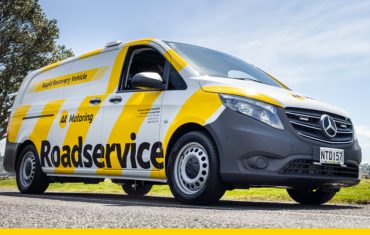
Pros and cons of fleet telematics for fatigue management
Fleet ManagementWhat can fleet telematics offer you when it comes to managing and minimising driver fatigue? The technology for monitoring fleet performance is getting better all the time and it can really help you ensure your drivers aren’t over-tired. So, it’s worth taking a look at the pros and cons of the telematics solutions.
Chain of responsibility & HR policies
Chain of Responsibility (CoR) regulations share responsibility for driver behavior across anyone influencing your vehicles’ movements. And there are serious consequences when things go wrong — fines of up to $25,000, not to mention the possible impacts of an accident involving one of your vehicles.
It’s very important, then, to understand both your COR responsibilities and the tools you can use to track the performance of your vehicle fleet.
It’s also essential that your HR policies reflect COR and your responsibility to protect your employees’ health and safety when they are using one of your fleet vehicles to do their job. Ask yourself some questions:
- Are your employee mobility practice related HR policies up-to-date?
- Do they cover requisite regulations and laws and reflect a broad COR?
- Are your policies frequently reviewed against the latest safety standards?
- And do your HR guidelines reflect employee expectations of your responsibilities?
Fatigue management, privacy, data security and Fleet telematics
Fatigue management is a key consideration in keeping employees safe when they are driving your vehicles. How long are people driving for? Are the getting sufficient downtime between stints at the wheel? Are your expectations of ground they can cover reasonable?
And fleet and HR managers are increasingly using telematics solutions to monitor driver safety. Indeed, many managers have seen the benefit of better vehicle monitoring technology in improved productivity and reduced downtime. But its unclear whether many fully understand the issues of privacy and data security related to the use of this technology.
What do we mean by telematics?
Let’s be clear what we are talking about. When we say telematics, we mean the use of hardware and software that collects activity data in vehicles. It tracks your vehicles’ locations and records vehicle performance and driver behaviour, using GPS and accelerometers. And it can make fleet management much easier.
The pros of telematics
Collecting in depth mobility data
Telematics collects valuable information about the use of vehicles that can greatly enhance driver safety. It can show when drivers:
- Exceed the speed limit – risking fines and increasing accident risk.
- Are too heavy / late on their braking – leading to unnecessary wear on brakes
- “Dive” too hard into corners – risking damage to vehicle suspension
- Accelerate too rapidly – causing excessive fuel consumption
- And a range of other dangerous and costly driving behaviours
Servicing and maintenance management
Telematics technology can alert when the vehicle is due for scheduled servicing. But it can also identify maintenance issues requiring more immediate attention that often go unnoticed until they develop into a bigger problem.
The savings to your business are obvious but telematics can also be an essential element in providing a safe workplace and minimising issues around vehicle maintenance and safety.
Managing driver behaviour and avoiding fatigue
Telematics can also help you manage driver fatigue. In larger vehicles rest breaks are legally required as determined by vehicle weights, dimensions and distances travelled. And fatigue can also affect passenger car drivers. In both cases, telematics gives you invaluable insight into whether your drivers tend to drive for too long between breaks.
It’ll help you uncover unhealthy driver behaviour and curb it and give you the data to back up your observations and any policy changes you make. Maybe it’s time to enforce mandatory rest-breaks? Or, maybe, there’s an opportunity to find a better balance between productivity and driver fatigue before ab accident happens.
Scheduling vehicle movements more efficiently
Telematics can ensure you meet your employee safety obligations is scheduling. Why? Easy: telematics data will allow you to develop realistic route time frames, removing the temptation / need to speed or drive unsafely.
As National Commercial Vehicles and Aftersales Manager at LeasePlan Australia and New Zealand, Craig Porter explains:
“If the scheduler[…] sees that you’re 75-kilometres from your next point but wants you to be there in one hour – and you’ve got to go through an urban, built-up area to get there – then that may be an unrealistic timeframe [that may endanger] the safety of that driver or that load.”
Telematics helps schedulers combat driver fatigue through better workload management while ensuring that you meet customer expectations.
The cons of telematics
So its clear that fleet telematics offer many benefits. But some aspects of the technology need to be properly managed — notably, privacy and data security.
Possible violations of employee privacy
Fleet vehicles are often available for both business and private use. That means you can know how many kilometres an employee drives getting their kids to and from sports at the weekend, where their vehicle spent Saturday night, the times they went through a drive-through, where they get away to at weekends, etc. No matter what they do with their free time, few people would be comfortable with their workplace knowing exactly where they went outside work hours.
The EU’s General Data Protection Regulations (GDPR), in place since May 2018, impose penalties for businesses when it they illegitimately collect and store private telemetric data. And the GDPR laws also specify the rights of employees and private individuals when it comes to “explore how their data is stored.”
These regulations don’t apply in NZ but the Privacy Act comes into play and the question of protecting privacy is a hot topic around the world. Safe to say, you need to be very careful with data you collect and be ready to give people access to their personal data.
In short: telematics is an amazing tool when it comes to improving productivity, managing COR and improving driver behaviour, but you need to ensure that you have the right policies and procedures in place around managing the data it collects related to your employees.
Want to know more about telematics solutions and novated leasing? Ask SG Fleet / LeasePlan
 Driving Insights
Driving Insights




